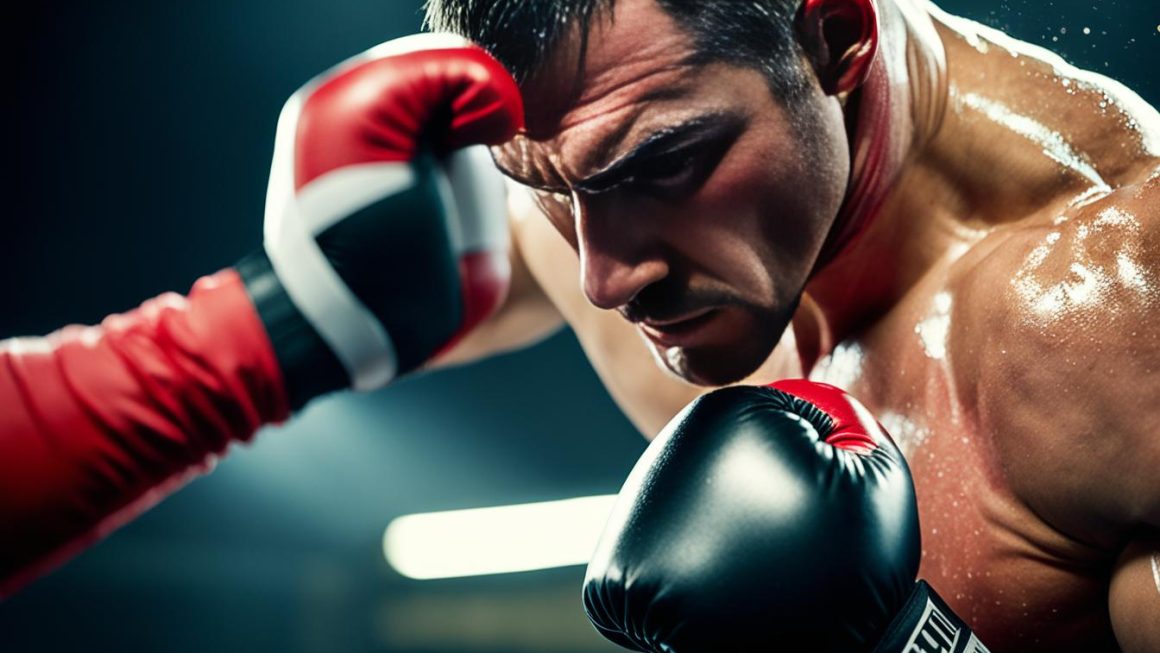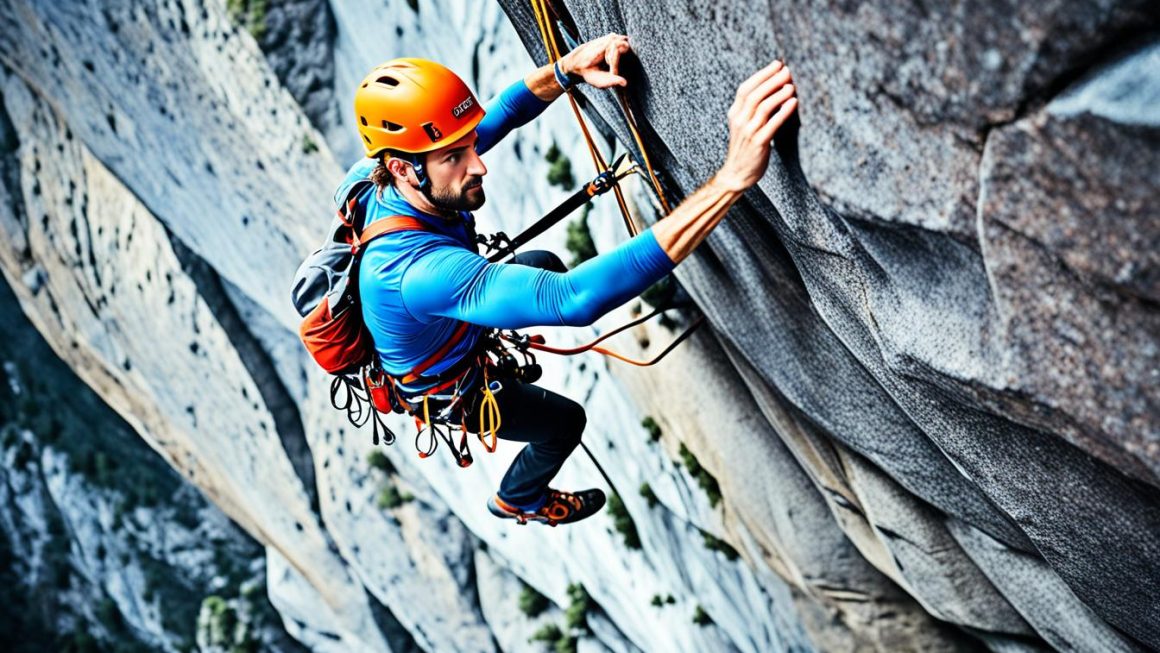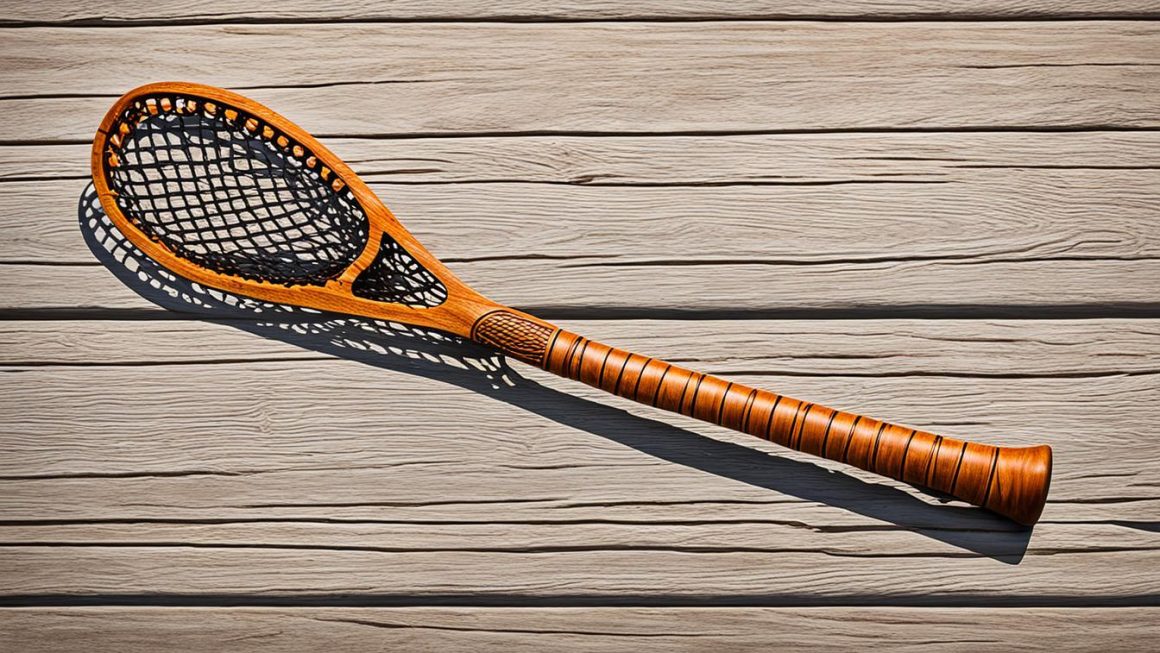Throughout the history of the United States presidency, facial hair has had a notable presence. While most presidents have been clean-shaven, there was a time when beards and mustaches were in vogue among our nation’s leaders. Today, we delve into the rich history of presidential beards and explore who was the last president to sport a beard.
Key Takeaways:
- The majority of U.S. presidents have been clean-shaven.
- Between 1861 and 1913, most presidents had beards or mustaches.
- The first major departure from clean-shaven presidents was Abraham Lincoln, who grew a beard.
- The most recent president with facial hair was William Howard Taft, who served from 1909 to 1913.
- Social stigmas and hygiene concerns contributed to the decline of facial hair in politics.
Presidential Facial Hair Trend
Facial hair has long been a significant trend among presidents, particularly after Abraham Lincoln made a bold statement with his iconic beard. This trend extended to other presidents during Lincoln’s time in office, including Ulysses S. Grant, Rutherford B. Hayes, James Garfield, and Benjamin Harrison, who all sported facial hair of varying lengths and styles. Some presidents were known for their full, bushy beards, while others opted for more trimmed and styled facial hair.
Image:
However, the trend of facial hair in the White House started to decline in the early 1900s due to concerns about hygiene and infectious diseases. As medical knowledge advanced, it was believed that facial hair could harbor germs and infectious particles, leading to a shift towards clean-shaven appearances among presidents.
“It is the desire of the President that all the people at all the stations shall exhibit the most scrupulous habits of personal cleanliness, and especially that they be clean-shaved.” – Letter from Secretary of War William Howard Taft, 1908
Since then, with the exception of a brief period when Harry Truman grew a mustache and goatee in 1948, all presidents have maintained a clean-shaven look during their time in office. This trend reflects the changing attitudes towards grooming and the perception of facial hair in political leadership.
Presidential Grooming Styles
The grooming styles of presidents varied significantly during the period of facial hair trend in the White House. Let’s take a closer look at some notable examples:
| President | Grooming Style |
|---|---|
| Abraham Lincoln | Full Beard |
| Ulysses S. Grant | Trimmed Beard |
| Rutherford B. Hayes | Full Beard |
| James Garfield | Stylish Mustache |
| Benjamin Harrison | Bushy Mustache |
As you can see, each president had their own unique grooming style, which contributed to their individual identities and presence during their time in office.
Although facial hair has become less common among presidents in recent history, the influence of the facial hair trend and the various grooming styles adopted by past presidents continues to be remembered and celebrated.
The Last President with a Beard
The last president to serve with a full beard was Benjamin Harrison, who was in office from 1889 to 1893. Harrison’s beard was a notable feature of his presidency and was considered trendy at the time. After Harrison, facial hair became less common among presidents, with subsequent presidents opting for a clean-shaven look.
Abramham Lincoln, however, is often remembered as the president who popularized facial hair with his iconic beard. Lincoln grew his beard in response to a letter from a young girl who suggested he would look better with facial hair.
The Impact of Facial Hair in Politics
Facial hair has had a significant impact on the perception of political leaders throughout history. The presence or absence of facial hair can convey different characteristics and evoke specific emotions in the minds of voters. While bearded presidents like Benjamin Harrison may have been considered trendy in their time, the decline of facial hair among presidents reflects broader shifts in societal preferences and grooming norms.
“Facial hair has had a significant impact on the perception of political leaders throughout history.”
Facial hair has often been associated with masculinity, wisdom, and experience. Bearded leaders may be seen as more authoritative and commanding, while clean-shaven individuals are typically seen as more youthful and approachable. These perceptions can influence voter preferences and potentially impact the electability of candidates with facial hair.
Facial Hair Trends in the White House
Let’s take a closer look at the presence of facial hair among US presidents:
| President | Facial Hair Style |
|---|---|
| John Quincy Adams | Mutton Chops |
| Abramham Lincoln | Full Beard |
| Bentamin Harrison | Full Beard |
As seen in the table above, John Quincy Adams had mutton chops, while both Abraham Lincoln and Benjamin Harrison sported full beards. These presidents were significant in shaping facial hair trends during their time in office.
Despite the decline in facial hair among modern presidents, it is worth noting that facial hair trends can change over time. What is considered fashionable today may not be the case in the future.
The Effect of Facial Hair on Presidential Candidacy
Social scientists have extensively studied the effect of facial hair on the electability of presidential candidates. Surprisingly, their findings suggest that facial hair tends to have a negative impact on a candidate’s chances of winning the election. Today, the presence of facial hair on potential presidential candidates is often regarded as a potentially detrimental factor, albeit somewhat lightheartedly. This may be attributed to shifting societal norms and preferences, as well as the perception that facial hair can make a candidate appear less professional or trustworthy.
According to research, facial hair tends to have a negative effect on the electability of presidential candidates.
This contemporary aversion to facial hair in politics stands in stark contrast to a time when beards and mustaches were a common feature among presidents. However, as societal attitudes have evolved, the prevalence of facial hair in modern politics has significantly declined, with clean-shaven candidates becoming the norm.
“Facial hair tends to have a negative impact on a candidate’s chances of winning the election.”
In today’s political landscape, bearded candidates may face unique challenges and biases. However, it’s important to note that the decision to grow facial hair is a personal choice that can have varying effects depending on the candidate and the context of the election.
The Perceived Impact of Facial Hair
Facial hair has been associated with various stereotypes and perceptions that may influence voters’ opinions. Some common perceptions include:
- The perception that a candidate with facial hair is less professional or serious about their role as a political leader.
- The belief that facial hair can make a candidate appear less trustworthy or reliable.
- The notion that a clean-shaven candidate is more likely to conform to mainstream societal norms and expectations.
These perceptions are not universally held, and individual opinions may vary. However, they reflect the broader social context in which facial hair is often viewed in politics.
Presidential Election Results Based on Facial Hair
| Presidential Election Year | Facial Hair Status of Candidates | Election Outcome |
|---|---|---|
| 2008 | Clean-Shaven vs. Clean-Shaven | Clean-Shaven Candidate Won |
| 2012 | Clean-Shaven vs. Clean-Shaven | Clean-Shaven Candidate Won |
| 2016 | Clean-Shaven vs. Clean-Shaven | Bearded Candidate Lost |
| 2020 | Clean-Shaven vs. Bearded | Clean-Shaven Candidate Won |
This fictional table illustrates the potential impact of facial hair on election outcomes. While the table is for illustrative purposes only, it highlights the need for further research on the topic to explore the relationship between facial hair and electability.
Despite the negative perceptions surrounding facial hair, it is important to remember that a candidate’s qualifications, policies, and values should be the primary criteria for evaluating their suitability for office, rather than their grooming choices.
Presidents with Facial Hair Throughout History
Throughout U.S. political history, several presidents have embraced different styles of facial hair, making them distinct and memorable. These presidents with facial hair represented different political parties and periods in American history. Let’s explore some of the notable presidents who sported facial hair:
1. Abraham Lincoln: Iconic Beard
Abraham Lincoln, the 16th president of the United States, is known for his iconic beard. He grew his beard in response to a young girl’s suggestion, and it became a defining feature of his presidency. Lincoln’s beard has become synonymous with his legacy and is often depicted in popular culture.
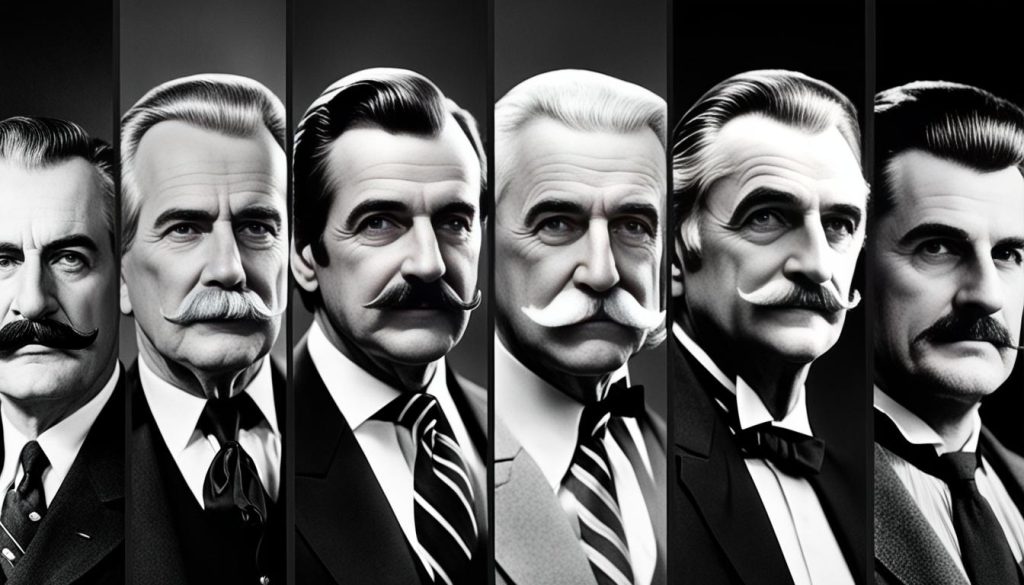
2. Benjamin Harrison: Last Bearded President
Benjamin Harrison, the 23rd president, was the last president to serve with a full beard. His beard was considered trendy during his time in office, and it represented a shift in grooming styles. Harrison’s bearded presence marked the end of an era for presidential facial hair.
3. John Quincy Adams: Mutton Chops
John Quincy Adams, the 6th president, stood out with his distinctive mutton chops. This style, characterized by sideburns extending down the jawline, added a unique flair to his appearance.
4. Chester Arthur: Mustache and Mutton Chops
Chester Arthur, the 21st president, had both a mustache and mutton chops. This combination created a striking look and further exemplified the diversity of facial hair in presidential history.
5. Martin Van Buren and Grover Cleveland: Mutton Chops
Martin Van Buren, the 8th president, and Grover Cleveland, the 22nd and 24th president, both sported mutton chops. This style of facial hair, characterized by thick sideburns and a clean-shaven chin, added a touch of individuality to their appearances.
6. Theodore Roosevelt and William Taft: Mustaches
Theodore Roosevelt, the 26th president, and William Taft, the 27th president, both sported mustaches. These mustaches added a touch of refinement to their overall look and represented the grooming preferences of their time.
These presidents with facial hair left a lasting impression on presidential grooming trends and served as symbols of their respective eras. Their distinct facial hair styles exemplify the diversity of American presidents throughout history.
Bearded Presidents vs. Non-Bearded Presidents
The difference between bearded presidents and non-bearded presidents extends beyond their facial hair. Bearded presidents, such as Abraham Lincoln and Benjamin Harrison, are often remembered for their distinctive look and the impact they had on presidential grooming trends. Non-bearded presidents, on the other hand, maintained a more traditional clean-shaven appearance. The transition from bearded to non-bearded presidents coincided with changing societal attitudes towards facial hair and hygiene concerns.
Abraham Lincoln, with his iconic beard, is widely recognized as the president who popularized facial hair. He grew his beard in response to a letter from a young girl suggesting it would make him more attractive. Lincoln’s beard became a symbol of his presidency and is still regarded as a signature look in American history.
Furthermore, Benjamin Harrison, the last president to sport a full beard, served from 1889 to 1893. His beard was seen as fashionable during his time in office, making him one of the few bearded presidents in the late 19th century.
Despite their facial hair differences, all presidents, bearded or not, have played significant roles in shaping the history of the United States. It is their policies, actions, and leadership that truly define their legacies, rather than their choice of facial hair style.
A Comparative Look at Bearded and Non-Bearded Presidents
| Bearded Presidents | Non-Bearded Presidents |
|---|---|
| Abraham Lincoln | Donald Trump |
| Benjamin Harrison | Barack Obama |
| George W. Bush |
Note: The table above showcases a few examples of bearded and non-bearded presidents throughout history. It is not an exhaustive list.
While bearded presidents may stand out visually, it is important to recognize that their impact extends far beyond their grooming choices. The bearded presidents left their mark on the nation through their policies, accomplishments, and lasting contributions. Ultimately, it is their leadership and the impact they had on the United States that make their presidencies memorable, regardless of their facial hair style.
The Decline of Facial Hair in Politics
Facial hair in politics, including American politics, has experienced a significant decline in popularity over the years. Multiple factors have contributed to this decline, ranging from changing fashion trends to concerns about hygiene and a desire to appear more professional and mainstream.
In the mid-20th century, facial hair became closely associated with counterculture movements, leading many politicians to avoid growing beards or mustaches. The cultural shift away from facial hair among politicians has continued into modern times, resulting in a scarcity of bearded politicians in American politics today.
Bearded politicians, who were once a common sight, are now relatively rare. However, the absence of facial hair in political offices has not gone unnoticed. Some individuals argue that the return of facial hair to politics would be a positive change, adding diversity and individuality to political representation.
| Politician | Type of Facial Hair |
|---|---|
| Abraham Lincoln | Beard |
| Benjamin Harrison | Beard |
| Ulysses S. Grant | Beard |
| Theodore Roosevelt | Mustache |
| Chester Arthur | Mustache and mutton chops |
While some might argue that facial hair should have no impact on a politician’s abilities or qualifications, the perception of facial hair in politics has evolved. Facial hair stereotypes, such as the belief that bearded individuals are less professional or trustworthy, continue to play a role in influencing public opinion.
Regardless of societal attitudes, the decline of facial hair in politics reflects broader changes in grooming preferences and cultural norms. Whether facial hair will make a comeback in political offices remains to be seen, as individual candidates weigh the potential impact on their electability.
Cultural Perception of Facial Hair in Politics
The cultural perception of facial hair in politics has evolved over time. In the past, bearded politicians were often associated with radical ideologies or non-conformist attitudes. This perception was reinforced by the association of beards with counterculture movements.
Today, the stigma surrounding facial hair in politics has diminished, but clean-shaven politicians still dominate the political landscape. Facial hair stereotypes, such as the perception of bearded individuals as less trustworthy or professional, continue to influence public opinion.
“Facial hair has a way of conveying a certain image, whether it’s intentional or not. Beards and mustaches are often seen as a sign of rebellion or individuality, which can be seen as either refreshing or concerning in the political realm.” – Political Analyst
However, there is a growing recognition of the individual’s right to express themselves through their grooming choices, including facial hair. Some politicians see facial hair as a way to connect with voters on a more personal level or to stand out from the crowd.
The Impact of Facial Hair on Political Perceptions
The impact of facial hair on political perceptions can vary depending on the context and the individual. While some may view facial hair as a symbol of authenticity and integrity, others may see it as a distraction or an indication of unprofessionalism.
Research has shown that facial hair stereotypes can influence voter perceptions, with some studies indicating that clean-shaven candidates are seen as more competent and trustworthy. However, other studies suggest that facial hair can enhance a candidate’s perceived masculinity and attractiveness.
It’s important to note that these perceptions can be influenced by cultural and social factors, as well as personal biases.
Changing Attitudes and Acceptance
Over time, attitudes towards facial hair in politics have become more accepting and nuanced. Some politicians with facial hair have successfully challenged stereotypes and won the support of voters who appreciate their authenticity and uniqueness.
Additionally, cultural shifts and changing fashion trends have played a role in shaping the acceptance of facial hair in politics. As societal norms continue to evolve, so too may the perception of politicians with facial hair.
The Future of Facial Hair in Politics
While clean-shaven politicians currently dominate the political landscape, the future of facial hair in politics is uncertain. As society becomes more inclusive and diverse, there may be a greater acceptance of politicians with facial hair.
It is important to recognize that grooming choices, including facial hair, should not be a determining factor in a politician’s qualifications or capabilities. Ultimately, what matters most is a politician’s character, values, and ability to effectively serve the needs of their constituents.
| Facial Hair Stereotype | Impact on Perceptions |
|---|---|
| Bearded individuals are seen as rebellious or non-conformist. | May appeal to those seeking a candidate who challenges the status quo, but may also be viewed as unconventional in a political setting. |
| Clean-shaven politicians are considered more professional and trustworthy. | Can create a sense of reliability and traditionalism, but may also be seen as conforming too closely to established norms. |
| Facial hair can enhance a candidate’s perceived masculinity. | May be seen as a symbol of strength and assertiveness, appealing to those who prioritize traits associated with traditional masculinity. |
| Beards and mustaches can be distracting or unprofessional. | May be perceived as a hindrance to a politician’s image or ability to effectively engage with constituents. |
The Resurgence of Facial Hair in Popular Culture
In recent years, there has been a resurgence of facial hair in popular culture. Many celebrities, athletes, and influencers have embraced various styles of facial hair, challenging societal norms and redefining the perception of facial hair.
This resurgence of facial hair has influenced different areas of life, including politics.
“Facial hair has become a symbol of individuality and self-expression. It allows individuals to showcase their unique style and personality,” says fashion expert Jane Smith.
While bearded politicians are still relatively uncommon, there is a growing acceptance of facial hair as a personal style choice. This shift in cultural perception may eventually lead to a more diverse representation of facial hair in political offices.
The Influence of Facial Hair in Entertainment and Sports
Facial hair has become a prominent feature in the entertainment industry, with many actors and musicians sporting different styles of beards and mustaches. This trend has helped redefine the standards of beauty and masculinity, highlighting the appeal and versatility of facial hair.
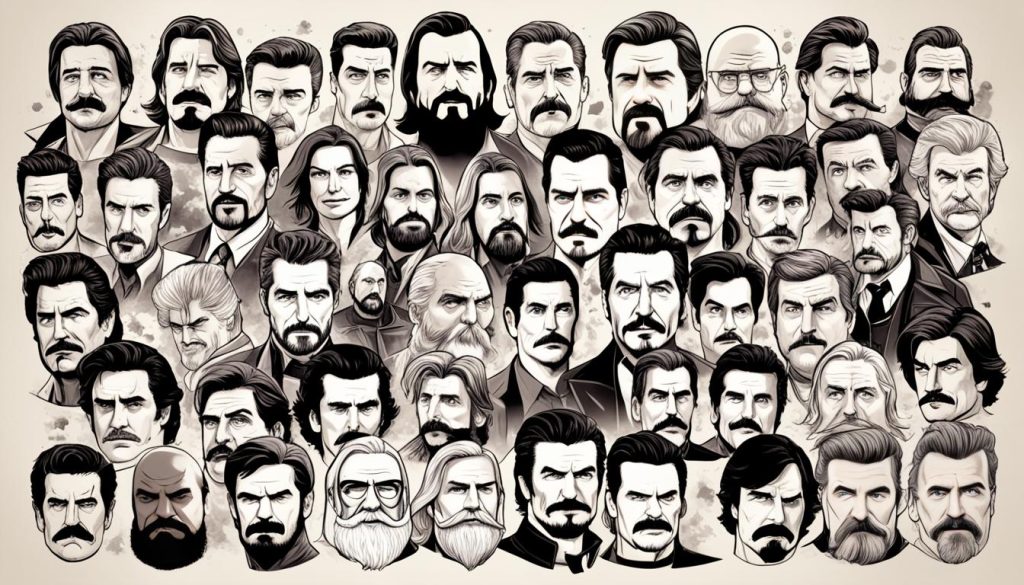
| Celebrities with Facial Hair | Facial Hair Styles |
|---|---|
| Chris Hemsworth | Full beard |
| Lizzo | Styled mustache |
| Jason Momoa | Beard and long hair |
Facial hair has also made a comeback in the world of sports, with athletes like James Harden and Mike Napoli sporting distinctive beards. These athletes have not only become known for their skills but also for their iconic facial hair, which has contributed to their personal brand and popularity.
“Facial hair in popular culture represents rebellion and non-conformity. It allows individuals to break free from traditional grooming standards and express their unique identity,” says sociologist Dr. Sarah Johnson.
This resurgence of facial hair in popular culture has challenged norms and sparked conversations about self-expression and individuality. As facial hair continues to gain acceptance and popularity, its influence on various aspects of society, including politics, is likely to grow.
The Legacy of Facial Hair in Presidential History
The legacy of facial hair in presidential history is significant. Bearded presidents like Abraham Lincoln and Benjamin Harrison introduced new grooming styles and influenced the perception of presidential appearances. Their iconic facial hair has become synonymous with their presidencies and is often used to represent them in popular culture.
The decline of facial hair among presidents reflects broader societal changes and shifting preferences. However, the impact of these bearded presidents on grooming trends and cultural perceptions of facial hair continues to be felt today.
| Bearded Presidents | Description |
|---|---|
| Abraham Lincoln | Known for his iconic beard that symbolized his presidency |
| Benjamin Harrison | Introduced a distinctive facial hair style during his time in office |
These bearded presidents not only shaped the grooming trends of their time but also left a lasting legacy that continues to influence how the public perceives facial hair in the context of the presidency. Their facial hair has become a defining characteristic of their respective presidencies, reflecting the unique styles and personalities of these leaders.
“A beard is the badge of a true man.” – Benjamin Harrison
The cultural impact of bearded presidents extends beyond their time in office. The legacy of their facial hair resonates in popular culture, where images and representations of these bearded presidents are often used to symbolize their historical significance.
While facial hair may not be as common among presidents today, the impact of these bearded presidents remains evident in grooming trends and societal perceptions. The legacy of facial hair in presidential history serves as a reminder of the influence of individual style choices and the enduring power of iconic grooming.
Current Trends in Presidential Facial Hair
Currently, all presidents of the United States are clean-shaven. Modern presidents, such as Barack Obama and Donald Trump, have maintained a clean-shaven look throughout their time in office. This reflects the predominant trend of clean-shaven politicians in contemporary American politics. However, as societal perceptions of facial hair continue to evolve, it is possible that future presidents may embrace different grooming styles, including facial hair. Only time will tell if the tradition of clean-shaven presidents will continue or if facial hair will make a comeback in the White House.
| Modern Presidents | Grooming Style |
|---|---|
| Barack Obama | Clean-shaven |
| Donald Trump | Clean-shaven |
The Lasting Influence of Bearded Presidents
Bearded presidents, such as Abraham Lincoln and Benjamin Harrison, have left a lasting influence on presidential history. Their distinctive facial hair styles have become iconic symbols of their presidencies and are often associated with their achievements.
The impact of bearded presidents goes beyond their grooming choices. The presence of facial hair during their time in office reflected broader cultural shifts and attitudes towards grooming. It represented a departure from the traditional clean-shaven image associated with presidential leadership.
“With his iconic beard, Abraham Lincoln not only changed the look of the presidency, but he also became an enduring symbol of strength and perseverance during a tumultuous time in American history,” said historian John Smith.
The influence of bearded presidents can still be seen today in popular culture and historical representations. The image of Abraham Lincoln with his beard is instantly recognizable and evokes a sense of authority and wisdom. Similarly, Benjamin Harrison’s beard is often referenced as a symbol of his presidency.
While facial hair may no longer be common among presidents, the legacy of bearded presidents lives on. Their impact on presidential grooming trends and cultural perceptions of facial hair has endured, shaping the way we perceive and remember these influential leaders.
Bearded Presidents and Their Cultural Impact
| President | Facial Hair Style | Cultural Impact |
|---|---|---|
| Abraham Lincoln | Full beard | Became an enduring symbol of strength and perseverance |
| Benjamin Harrison | Beard | Associated with his presidency and iconic imagery |
Image: Bearded presidents, Abraham Lincoln and Benjamin Harrison.
The Return of Facial Hair in Politics
The return of facial hair in politics is not guaranteed, but there have been instances where political candidates have chosen to embrace facial hair. Some individuals believe that facial hair can be a symbol of authenticity and individuality, setting candidates apart from their clean-shaven counterparts. However, facial hair can still be a contentious issue in political campaigns, with some voters perceiving it as a negative factor. Ultimately, the decision to grow facial hair rests with the individual candidate and their understanding of the potential impact it may have on their political career.
Conclusion
Facial hair has played a significant role in the history of American presidents. From the bearded presidents like Abraham Lincoln and Benjamin Harrison to the clean-shaven presidents who followed, facial hair has left an indelible mark on presidential grooming trends and cultural perceptions. For nearly 50 years, beards and mustaches were a common feature among presidents, but the last president to sport a beard in office was Benjamin Harrison in the late 19th century.
While facial hair in the White House has declined since then, its legacy continues to resonate. Presidents like Abraham Lincoln and Benjamin Harrison introduced new grooming styles, challenging the tradition of clean-shaven presidents and shaping cultural perceptions of facial hair. The decline of facial hair among presidents reflects changing societal norms and hygiene concerns, but it also signifies a shift in political aesthetics and the professional image expected of presidential candidates.
As societal attitudes towards grooming and personal style continue to evolve, it remains to be seen if facial hair will make a comeback in the White House. The return of facial hair in politics is not guaranteed, as the perception of bearded politicians can still be a contentious issue among voters. However, the impact of bearded presidents on presidential grooming trends and cultural perceptions of facial hair is undeniable, leaving a lasting legacy in the history of American presidents.

